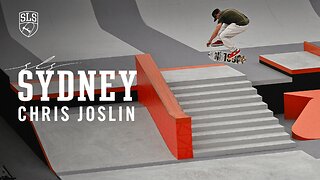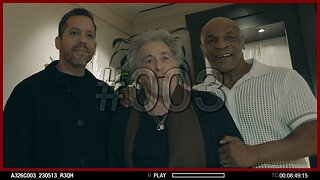Premium Only Content

HRB335 Ayurveda Arthritis 01 Chinese Medicine TCM Rheumatism Sciatica Tibetan Traditional Oriental
HRB335 is an In-Depth Ayurvedic and Chinese Medicine Study (Diagnosis and Treatment) of Arthritis and Rheumatism (Ama Vata or Sandhi Gata Vata in Ayurvedic Sanskrit, Bi-Syndrome in TCM), both Rheumatoid, Osteoarthritis and Gout along with Osteoporosis, Sciatica (Grudhrasi) and Back Pain (Kati Shula). Comparison - Contrast of Arthritis classical Diagnosis (Assessment), Etiology (Causes), Pathology (Disease Process - Progress) and Treatment (Therapies) in both Traditional Chinese Medicine (T.C.M. or Traditional Oriental Medicine and Acupuncture) and Ayurveda -- both styles Indo-Tibetan Buddhist and Hindu Ayurveda with along with Tibetan Medicine (Traditional Ayurvedic Medicine - T.A.M.).
Course Title is:
"One-Earth Therapeutics - Kaya Chikitsa - Integrated Ayurvedic-Chinese-Western Remedies for Arthritis (Ama Vata - Asthi, Sandhi and Majja Rogani), Gout (Rakta Pitta), Back Ache (Kati Shula) and Sciatica (Grudhrasi) according to 200 B.C. Charaka Samhita- Level I"
Course Codes are: HRB335, HRB535, HRB635, HRB735
These Hi-Def HDTV videos and the MP3 audio files are the first in a 1.5 trimester unit (22.5 class hours long) series of lectures aimed and comparing, contrasting and synthesizing Arthritis Diagnosis and Treatment in both the 2500 year old Chinese Medicine (Zhong Yi or TCM) with the 2500 year old Indian Ayurveda and 1300 year old Tibetan Ayurveda systems (TAM). The goal of this lecture program is to assist the student in seeing and understanding their vast commonalities in both Rheumatism theory (concepts) and practice (clinic) in order to learn integrated practice modalities.
This rarely presented synthesis of the healing wisdom of these three great cultures (China, India and Tibet) will not only compare-contrast the Rheumatism Pain theory of these two time-honored healing systems, but more importantly, will examine in detail the clinical practice aspects of Arthritis treatment -- both herbal connections (Indian, Tibetan and Chinese herbs and minerals) and acupressure (Marmas in Ayurvedic Sanskrit) with acupuncture in the Chinese system.
We examine Arthritis and Rheumatology from the perspective of the Ayurvedic three doshas (Tridosha - Vata-Pitta-Kapha) and look at their relationship to major concepts in Chinese Medicine that are often spoken of by acupuncturists to their patients. Some of these relationship comparisons include:
1. Vata Dosha (Space and Air - Wind, Cold, Qi [Prana in Ayurvedic Sanskrit]),
2. Pitta Dosha (Fire and Water - Spleen Qi [Jathar Agni in Sanskrit], Heat, Damp-Heat, Blood [Rakta Dhatu in Sanskrit], and Yang),
3. Kapha Dosha (Water and Earth - Phlegm-Mucous [Ama in Sanskrit], Damp-Cold, Jing Qi [Ojas in Sanskrit] and Yin).
(Ayurvedic Medicine), HRB335, Arthritis, Rheumatism, Rheumatoid, Osteoarthritis, Osteoporosis, Sciatica, Back Pain, NUT108, NUT301, AYR220, SUT575, TIB401, Tibetan Medicine, Four Medical Tantras, Amrita Hridaya Guhyopadesha Tantra, Amrta Hrdaya Guhyopadesa Tantra, rgyud Bzi, rGyud-bzhi, Vagbhata, Astanga-Hridaya, Bhagwan Dash, Ayurvedic Medicine, Ayurveda, Ayur-Veda, Vedas, Vedic, Tibetan Medicine, Vata Dosha, Pitta Dosha, Kapha Dosha, Nutrition, Ayurvedic Food Therapy, Ayurvedic Nutrition, Ayurvedic Herbs, Vasant Lad, Dr Lad, Charaka, Caraka, Patanjali, Yoga, Sushruta, Nagarjuna, Medicine of Tibet, Tibetan Ayurveda, Asian Medicine, Oriental Medicine, Chinese Medicine
-
 5:35
5:35
SLS - Street League Skateboarding
4 days agoChris Joslin 3rd Place SLS Sydney 2024 | Best Tricks
2.33K2 -
 29:15
29:15
Breaking Points
5 hours agoTrump Taps FOX HOST For SecDef, Huckabee For Israel Amb
323 -
 13:53
13:53
DeVory Darkins
16 hours ago $1.77 earnedMSNBC and CNN EXPLODE as Elon & Vivek Prepare to DISMANTLE the GOV
3.16K21 -
 LIVE
LIVE
Darkhorse Podcast
2 hours agoThe 251st Evolutionary Lens with Bret Weinstein and Heather Heying
2,012 watching -
 1:31:54
1:31:54
The Quartering
3 hours agoTrump Wages WAR On Deep State, Twitch Is Collapsing, New Diddy Tapes, CIA LEAKS & More
48.7K27 -
 16:12
16:12
Mike Tyson
18 hours ago $0.25 earnedDavid Blaine, Al Pacino, Mike Tyson & VEGAS | BEHIND THE MIKE #003
1.04K2 -
 1:08:52
1:08:52
Russell Brand
3 hours agoTrump Appoints Elon & Vivek To DOGE As Elites LOSE THEIR MINDS + CNN & MSNBC In FIRE SALE! - SF492
111K196 -
 LIVE
LIVE
Mally_Mouse
3 hours agoLet's Yap About It - LIVE!
167 watching -
 48:08
48:08
PMG
1 day ago $0.03 earnedWho Will become GOP Senate Majority Leader?
204 -
 3:32:08
3:32:08
Nerdrotic
6 hours ago $13.52 earnedUS Congress UFO Hearing LIVE REACTION with Chris Gore | Forbidden Frontier #081
55.5K12